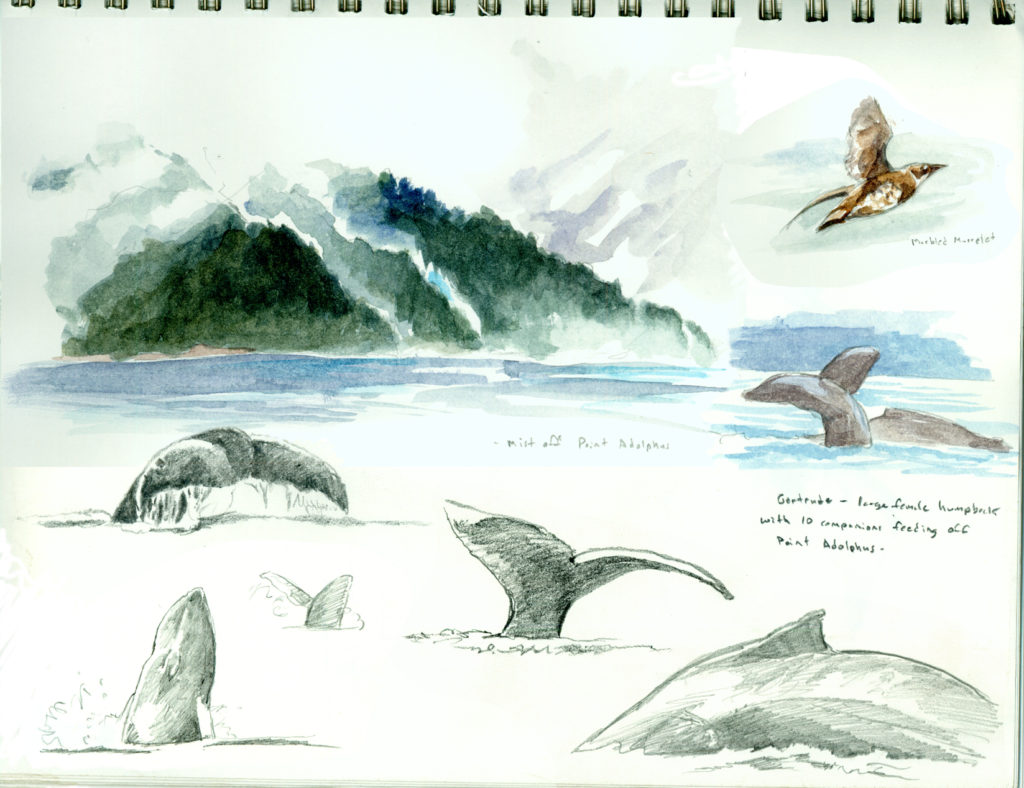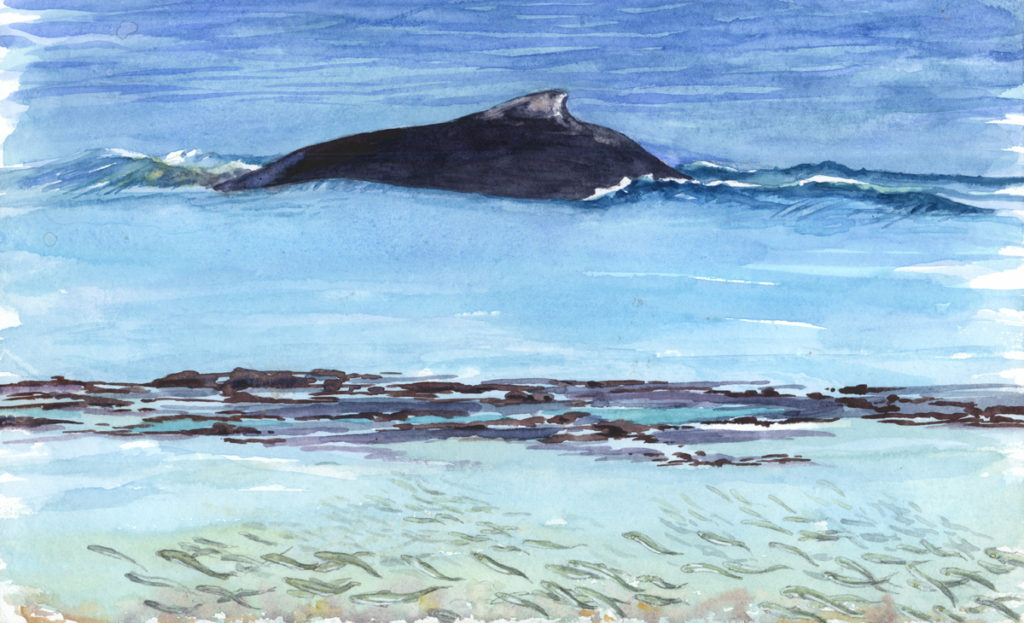The nutrient rich waters of Glacier Bay support a large population of the endangered humpback whale, and today I am going out to help identify some of these whales with park biologist Chris Gabriele. Glacier Bay has the longest running humpback whale monitoring program, they have been identifying individual whales and behavior since 1985. Most of these whales migrate 2500 miles to Hawaii every winter and Southeast Alaska is where they feed on krill and small schooling fish to bulk up for the trip back and forth. The study of returning individual whales and calves , their feeding behavior and human interactions, as well as their acoustic environment, is helpful in enacting policies to protect these magnificent creatures. Because they return and feed in specific areas of the park, rules involving boat speed and travel help avoid whale/ship collisions.
Our transport today is the Sand Lance, at 19′ it is half the size of an adult humpback whale. My job is to help record data about the whales we encounter. Chris takes photos of their backs, dorsal fins and flukes to accurately ID each individual.
After a short search we encounter a sizable group of whales feeding off Point Adolphus, it looks to be 10 or more whales. We’re excited because this group has not yet been seen this year in its entirety, and it includes the matriarch Gertrude, who is a regular resident of the bay. As we cut the engine to record vocalizations under water, the whales start to move closer to the boat. I’m sketching on the foredeck, and soon several whales are coming up thrillingly close. It would not take much of them to upend our boat, but they seem carefully aware of our presence and we back off slowly. As the whales dive we see a line of tail flukes, 5 or 6 all together, break the water’s surface. Another incredible day.
 This is a short video on the whale research in the park, featuring Chris.
This is a short video on the whale research in the park, featuring Chris.
